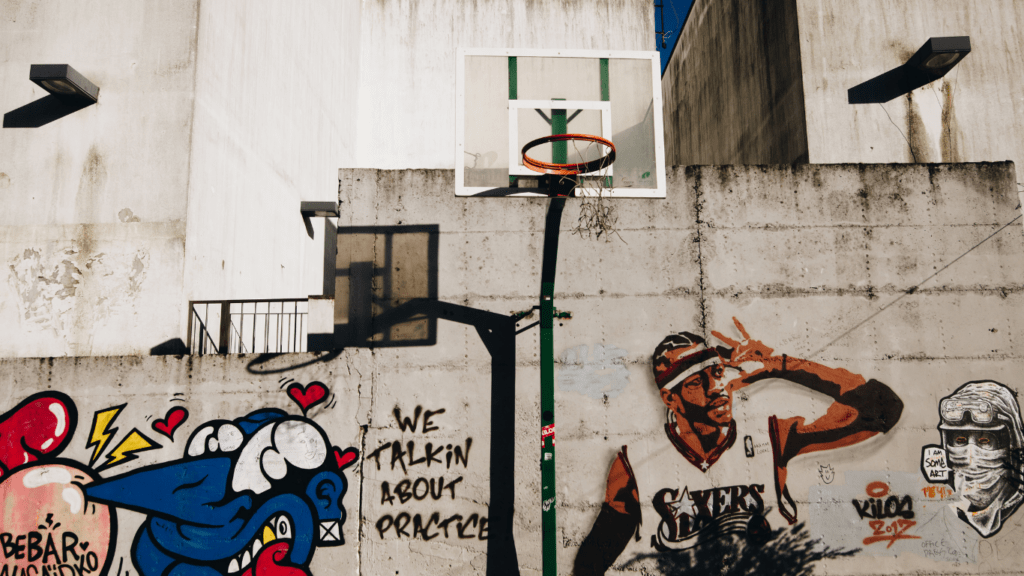The Rise of Street Art in Urban Landscapes
Street art has significantly impacted urban landscapes, evolving from its clandestine beginnings to mainstream acceptance. Let’s delve into its historical development and transformation.
Historical Development of Street Art
Street art emerged in the 1960s in Philadelphia and New York City. Its early forms, like graffiti, were expressions of rebellion. Artists such as Cornbread and Taki 183 left their marks in public spaces, often at great personal risk.
Over time, techniques evolved from simple tags to intricate murals. The ’80s and ’90s saw a rise in street art’s sophistication, thanks to artists like Banksy and Shepard Fairey, who introduced stenciling and political commentary.
From Vandalism to Acceptance
Initially, society viewed street art as vandalism. Authorities often criminalized it, leading to harsh penalties for artists. However, the perception began changing in the late 20th century.
Murals and installations started gaining legal recognition as legitimate art forms. Cities like Berlin, London, and Los Angeles began commissioning pieces to revitalize neglected areas. Today, street art festivals attract thousands, celebrating the merging of urban space and creative expression.
Impact of Street Art on Community and Culture

Street art significantly impacts community identity and local culture, transforming urban spaces and fostering a sense of belonging.
Enhancing Urban Identity
Street art enhances urban identity by reflecting a city’s unique culture and history. Artists often incorporate local symbols, historical figures, and cultural narratives into their work.
For example, murals in neighborhoods like Miami’s Wynwood Walls showcase aspects of their diverse cultural backgrounds. This representation helps residents feel a deeper connection to their surroundings, reinforcing their sense of place.
Fostering Community Engagement
Street art fosters community engagement by encouraging interaction and dialogue. Public artworks often become hubs for social activity, attracting residents and tourists alike.
For instance, festivals like the Atlanta BeltLine Walls bring artists and locals together, creating vibrant spaces filled with collaborative spirit. These interactions promote community solidarity and provide platforms for discussing social issues.
Street art’s vibrant presence in urban landscapes enriches communities culturally and socially, making cities more appealing and cohesive.
Street Art as a Tool for Urban Regeneration
Street art plays a critical role in urban regeneration, breathing new life into neglected areas and boosting local economies.
Revitalizing Neglected Areas
Street art transforms neglected areas by turning rundown buildings and barren walls into vibrant canvases. Artists create murals and installations that attract attention and foster a sense of pride among residents.
In cities like Detroit and Lisbon, extensive street art projects have rejuvenated entire neighborhoods, reducing crime rates and encouraging community interaction.
Attracting Tourism and Economic Growth
Street art attracts tourists, leading to increased economic growth. Tourists visit neighborhoods specifically to view murals and installations, boosting local businesses like:
- cafes
- shops
- hotels
In cities such as Melbourne and Bogotá, street art tours have become significant tourist attractions, generating employment opportunities and increasing the city’s appeal as a cultural hub.
Challenges and Controversies Surrounding Street Art
Street art, while celebrated, faces numerous challenges. Key issues arise, particularly around legalities and commercialization, impacting the perception and integrity of street art.
Legal Issues and Public Perception
Street art often blurs the line between creativity and vandalism. Some cities adopt strict laws against unauthorized artworks, categorizing them as defacement. For instance, New York imposes hefty fines on those caught tagging or painting without permits. Public opinion varies widely.
Some view street artists as creative visionaries, while others see them as lawbreakers. Cities like Los Angeles implement mural ordinances, aiming to regulate legal artwork spaces. However, such regulations can stifle spontaneous artistic expression, reducing the raw appeal of street art.
Balancing Commercialization with Artistic Integrity
- Commercialization introduces both opportunities and pitfalls for street artists.
- Corporate sponsorships can provide artists with larger platforms and financial security.
- Notable brands like Nike and Adidas often collaborate with street artists for product designs.
Nonetheless, this commercial interest risks diluting the art’s authenticity. Artists may feel pressured to cater to corporate interests, potentially compromising their true artistic vision.
For instance, works that began as grassroots expressions against consumerism could paradoxically be co-opted by the very entities they critique, leading to a conflicted reception among art purists.
By navigating legal frameworks and commercial interests, street artists strive to maintain their craft’s integrity while adapting to urban landscapes’ evolving dynamics.


